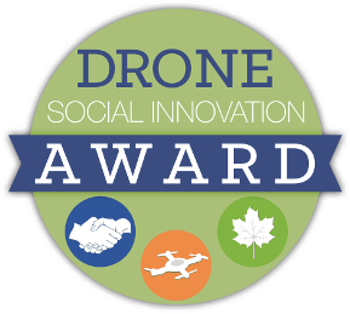A drone of your very own: These aren’t your average remote-controlled aircraft
By Michael S. Rosenwald,
Kevin Good thought there was an 80 percent chance he could successfully deliver his brother’s wedding rings with a tiny drone.
“The other 20 percent is that it could go crashing into the bride’s mother’s face,” the Bethesda cinematographer somewhat jokingly told his brother.
His brother was okay with those odds, so he signed off.
A few weeks ago, sitting in the back row at the ceremony near San Francisco, Good steered the drone to the altar, delivering the payload in front of 100 or so astonished guests. His brother grabbed the rings, then watched as Good buzzed the drone off into the blue sky.
“At the end of the wedding, that was what everyone was talking about,” Good said. “It was pretty awesome.”
This is the gee-whiz side of drones, a technology typically associated with surprise air assaults on terrorists. Drones designed to do the bidding of ordinary people can be bought online for $300 or less. They are often no larger than hubcaps, with tiny propellers that buzz the devices hundreds of feet into the air. But these flying machines are much more sophisticated than your average remote-
controlled airplane: They can fly autonomously, find locations via GPS, return home with the push of button, and carry high-definition cameras to record flight.
Besides wedding stunts, personal drones have been used for all kinds of high-minded purposes — helping farmers map their crops, monitoring wildfires in remote areas, locating poachers in Africa. One local drone user is recording his son’s athletic prowess from a bird’s-eye view, potentially for recruiting videos.
But not every flier is virtuous. There are videos on YouTube of people arming drones with paintball guns. In one video — apparently a well-done hoax to promote a new video game — a man appears to fire a machine gun attached to a small drone and steer the device into an abandoned car to blow it up.
Privacy and civil rights activists worry about neighbors spying on each other and law enforcement agencies’ use of drones for surveillance or, potentially, to pepper-spray protesters.
“Drones make it possible to invade privacy without even trespassing,” said Amie Stepanovich, a surveillance expert at the Electronic Privacy Information Center. “This is a real concern.”
The Washington region is a hotbed of personal-drone deployment, possibly because of the area’s tech-wonkiness and wealth. Nearly 500 people belong to the D.C. Area Drone User Group, making it the largest such organization in the country. They have been assembling for almost a year, working on flying safety, spreading a more benevolent message about drones and incubating ideas for companies.
“What this is really about is a grand experiment in taking a technology and making it empowering instead of disempowering,” said Timothy Reuter, the group’s leader, whose day job is at the U.S. Agency for International Development. “I believe we can take this technology and start with ordinary people to create small businesses, to do art, to monitor the natural resources of the community.”
But already, several law enforcement agencies across the country, including the Queen Anne’s County Sheriff’s Office on Maryland’s Eastern Shore, have purchased the devices. Meanwhile, as many as 40 states, including Maryland, have considered legislation to limit police drone use or ban the devices. A small Colorado town is weighing an ordinance to allow hunters to shoot down drones.
In supporting a Maryland bill to limit law enforcement use of drones, an American Civil Liberties Union official testified, “In short, all the pieces appear to be lining up for the eventual introduction of routine aerial surveillance in American life, a development that would profoundly change the character of public life in the United States.”
Drone defenders, including the Association for Unmanned Vehicle Systems International, say those fears are overblown and threaten the potential economic benefits of commercial drones. The group predicts 70,000 new U.S. jobs and a nearly $14 billion economic boost.
“These concerns have had an impact on us,” said Ben Gielow, the general counsel for the unmanned-vehicle group. “There is a widespread belief that these are just military systems for persistent domestic surveillance. That’s just not the case.”
Right now, drones operate under the same rules as radio-
controlled planes. Commercial use is not legal, meaning Good could not, for instance, start a drone wedding-ring delivery service. Congress has mandated that the Federal Aviation Administration come up with rules by 2015 to integrate drones into the nation’s airspace. Hobbyists are supposed to fly the devices below 400 feet.
That has not stopped scores of devices from entering the market. There are generally three types of personal drones available.
There is the toy market, which features devices such as the Parrot AR.Drone. It sells for $300 and can be bought online, at the mall or even through the online Apple store. The drone is controlled with an iPhone and operates over WiFi, recording what happens below.
Many newbies start off with the Parrot and eventually graduate to more sophisticated devices, such as the fully autonomous drones sold for upwards of $600 by 3D Robotics, a California company run by Chris Anderson, the former editor of Wired magazine, who gave up words for drones.
Anderson said the company, founded in 2009, was generating $5 million a year in sales early on and is now growing 100 percent year over year. His drones can fly for 15 or 20 minutes, with HD cameras attached. If a big gust of wind comes along, the drone knows how to stabilize itself.
And then there are the $20,000-and-above drones, such as the Falcon UAV that police departments are purchasing. They can fly for hours at a time and coordinate with surveillance systems on the ground.
Last month, at Davis Airport in Laytonsville, more than three dozen members of the D.C. drone group gathered for a fly-in. The group included men with their grandsons progressing from remote-
controlled planes, photographers and filmmakers hoping to integrate drones into their work, and military contractors such as Ken Druce, who was zooming his drone through the air when another drone came spiraling down to the earth not far from his feet.
“You’re fine, you’re fine,” Druce told the other pilot.
“No, I wasn’t fine,” he replied.
They laughed. Another pilot offered the following observation: “Everyone crashes.” Especially amateurs. But Druce has a loftier goal — starting a company that helps farmers map their fields for fertilization.
The group of fliers is mostly male, ranging from elementary-schoolers to retirees, and the diversity of backgrounds is best exemplified by Scott Avey, the group’s self-proclaimed “drone evangelist.” The title is not entirely in jest. Avey is a pastor at a Frederick church, or, as he put it, “a guitar-playing pastor who flies drones.” He has used his drone to get aerial footage of his church’s parking lot to figure out more-efficient parking strategies.
Not long ago, he met with members of Congress to discuss the potential for commercial drone uses. Like other drone fliers, he is worried that privacy and safety issues will overshadow the commercial benefits of drones, a concern shared by a variety of groups. The National Football League and Motion Picture Association of America have reportedly both pushed the FAA to integrate commercial use into U.S. airspaces.
“We are at the same place with drones in the technology curve as computers were in 1986,” Avey said. “People would have never thought of the uses that we use computers for now.”
The D.C. group is sensitive to concerns about drones, and it has been pushing positive uses. There are hopes to partner with a local first-responder organization to help with search-and-rescue missions for missing children or Alzheimer’s patients who have wandered off. The group wants to work with disabled veterans to help them find commercial uses for the technology. This month, it hosted a guest speaker, University of Maryland professor Tom Snitch, who is helping park rangers in Africa spot poachers, with drones larger than the ones the group typically flies.
Good, the wedding-ring deliveryman, wants to use drones to make commercials and movies, but he knows the nascent personal-drone community has more work to do to make people comfortable with the technology.
“There are people outside the White House probably right now protesting drones,” he said. “But we’re trying to do really positive stuff with these things, developing uses that are cool and new and exciting. I want to live in the future that is more like ‘The Jetsons’ and less like ‘The Terminator.’ ”


